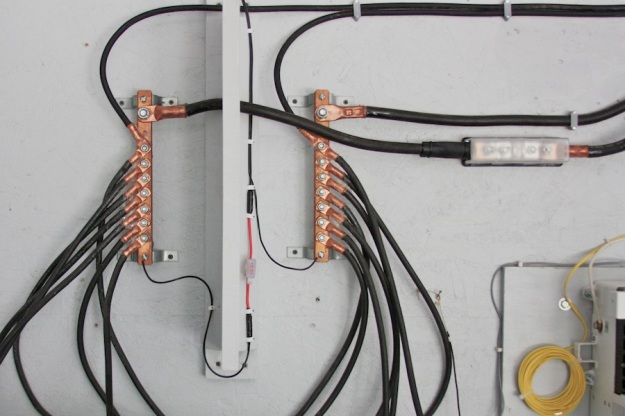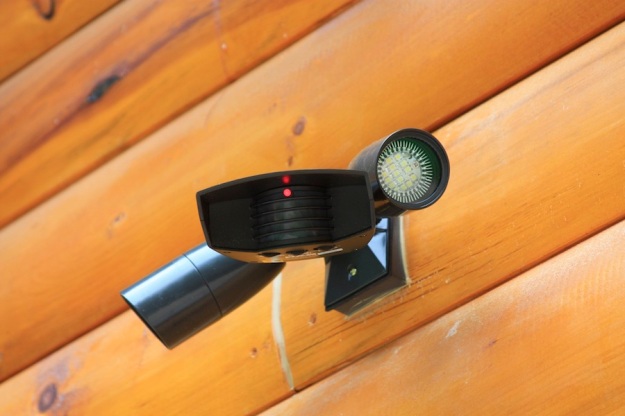8.20.2010-Friday
I arrived at the cabin 7:30 p.m. After a pasty I headed out to the garage to tinker. I set out with the intention of installing a piece of wood that cover the 1” opening of the 12v LED lighting line that runs up the wall from the bus bars to the a triple light switch near the service door. I ended up cutting the opening for the triple light switch as well as a single 12v light fixture over the work bench, and then installing and wiring them both. By night’s end everything was wired; including the fuse holder. Tomorrow I’ll cut and install the motion light double fixture and the single fixture over the service door.
8.21.2010-Saturday
After breakfast we assembled the rest of the LED system. The Sonicrafter was the perfect tool for cutting through the thick siding while leaving the OSB underneath intact. With all of the wiring completed, there were only two boxes to be installed. It took about two hours.
The 1st light illuminates the workbench and window.
The 2nd and 3rd light team up with the motion sensor off the front (12 min duration, 100% sensitivity, enabled for dusk and nighttime).
The 4th light shines on the cabin and baths it in a pure white light visible from the edge of our land.
With solar keeping our battery bank at full, the LED lights are left on pretty much all the time. The total draw of two lights and an active motion sensor is only about 15 Watts. Each bulb puts out 330 lumens at the cost of 4.6 Watts.
UPDATE (8-26-2011): I’ve had some comments about what kind of switches were used for the 12V DC lighting and some one noted that I have toggle switches in the schematic, however that is not what I used. I used a three switch AC standard light switch – which, while not rated for DC current is perfectly capable. The low voltage (I’ve heard that the rule of thumb is to run no more than 25% of the AC rated voltage through a DC wired switch) in addition to each LED using < 0.5 Amps means that there is little chance of overwhelming the circuit. By keeping the voltage low there is little chance of arcing during the disconnect of the circuit under a load (the LED bulb). High voltage DC will arc a lot compared to the same voltage as AC, which, over time can damage the switch possibly leading to component failure of the switch.
In summary, I’m running < 1/8 the rated AC voltage as DC through the switch and I’m well under the max Amp rating of the switch.






Where did you get the 12v motion sensor. Thanks b.